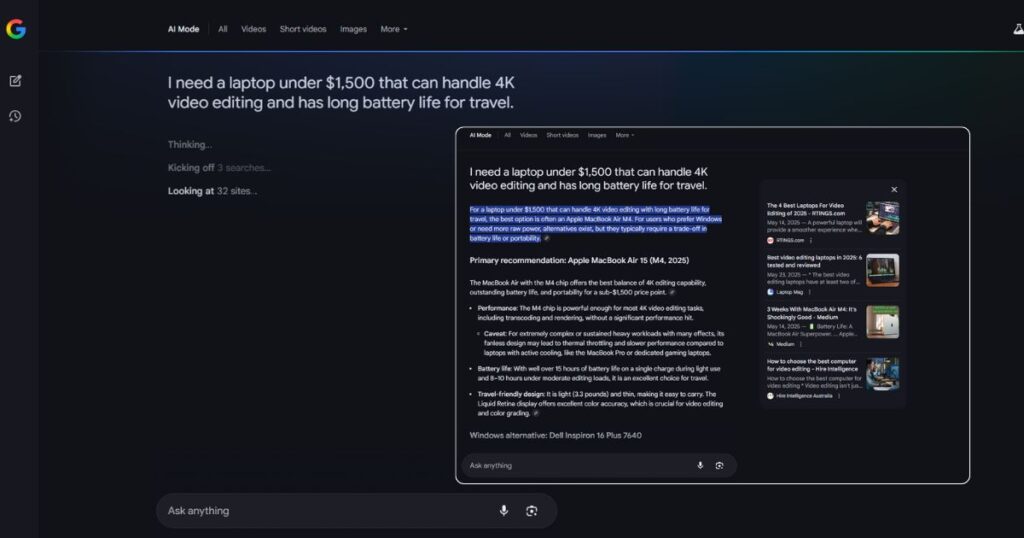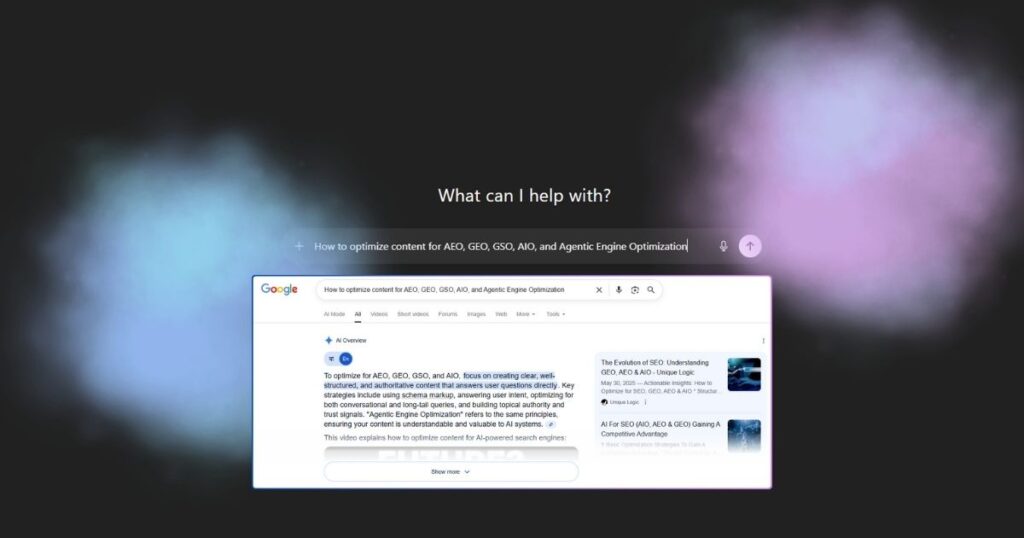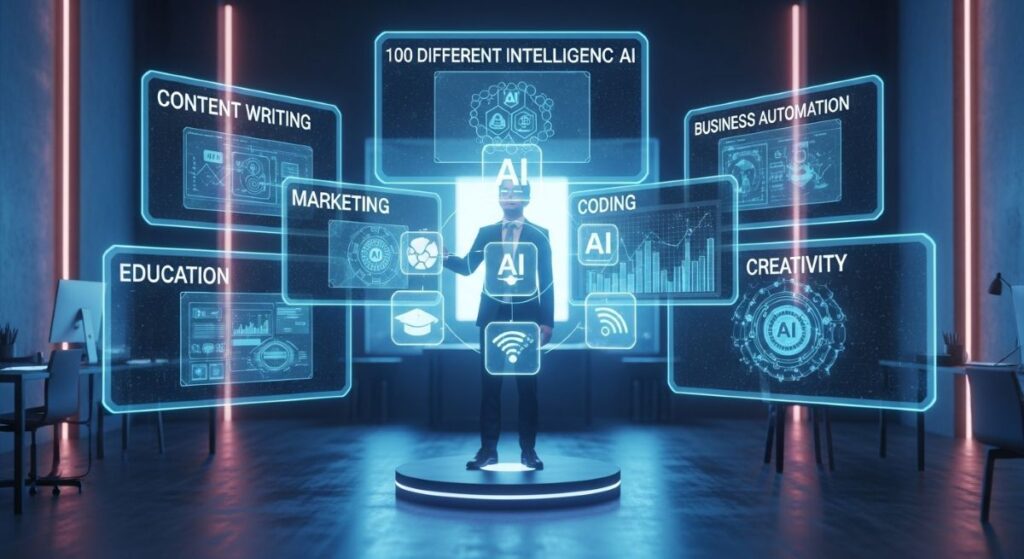Generative AI is one of the most exciting advancements in technology today. Whether you’re a beginner or an expert, understanding what generative AI is and how it works is essential to keeping up with the rapidly changing tech landscape. In this guide, we’ll walk you through everything you need to know, from the basics to advanced concepts, with clear explanations and real-world examples. Ready to dive in? Let’s go!
What Is Generative AI?
Generative AI refers to a type of artificial intelligence that can create new content, such as text, images, music, and even videos, based on the data it has been trained on. Unlike traditional AI, which typically analyzes and processes data to make decisions or predictions, generative AI is all about creation. It generates something entirely new, often mimicking human creativity.
Key Features of Generative AI:
- Creativity: It can make new things like art, stories, and music.
- Learning: It improves over time by learning from large datasets.
- Flexibility: It can be used in various fields like entertainment, medicine, marketing, and more.
How Does Generative AI Work?
Generative AI works by training models on vast amounts of data, which allows it to learn patterns and relationships within the data. It then uses this knowledge to generate new content. Think of it like teaching a robot to create based on what it has learned from a huge collection of examples.
Here’s a simple breakdown of how it works:
- Data Collection: Generative AI is trained on large sets of data, such as text, images, or music.
- Pattern Recognition: The AI identifies patterns, styles, and structures in the data.
- Content Generation: The AI uses its learned knowledge to create new content that mirrors the patterns it observed.
For example, if you train a generative AI on thousands of paintings, it could generate a completely new piece of artwork based on the style of the ones it’s seen. The more data it has, the better it gets at creating realistic and high-quality content.
Types of Generative AI
Generative AI is a broad field with different types of models designed to generate various kinds of content. Let’s look at a few of the most popular ones:
1. Generative Adversarial Networks (GANs)
GANs are one of the most famous types of generative AI. They consist of two neural networks that work together:
- The Generator: This part of the model creates new data (like images or text).
- The Discriminator: This part judges whether the data created by the generator looks realistic.
These networks “compete” with each other, which helps the AI generate high-quality content. GANs are often used to create realistic images, videos, and even deepfake content.
2. Transformers
Transformers are AI models that excel at understanding and generating text. They can write essays, summarize articles, or even carry on a conversation. You might have heard of popular transformers like GPT-3 (from OpenAI) and BERT (from Google). These models are widely used for tasks involving natural language processing (NLP), such as:
- Text generation
- Translation
- Chatbots
3. Variational Autoencoders (VAEs)
VAEs are another type of generative AI used primarily for image creation. Unlike GANs, VAEs focus on understanding the underlying factors of the data to generate new instances that are similar to the original dataset. VAEs are especially useful in areas like generating artwork or 3D objects.
How Is Generative AI Used in the Real World?
Generative AI isn’t just a cool concept—it’s already being used in many industries. Here are some examples of how it’s transforming the world:
1. Content Creation
Generative AI tools like GPT-3 can write blog posts, articles, and even poetry. They are becoming essential for marketers, writers, and businesses that need content at scale. AI can help you generate ideas, create drafts, or even refine your writing.
2. Art and Design
Artists and designers use generative AI to create unique artwork. Tools like DALL·E, another creation from OpenAI, generate stunning images from text prompts. Imagine typing “a futuristic city at sunset,” and the AI produces a beautiful image based on your description.
3. Gaming and Entertainment
Generative AI is changing the way games and movies are made. It’s being used to generate characters, storylines, and even entire game worlds. In movies, AI can assist in creating realistic CGI (computer-generated imagery) and animations.
4. Healthcare
In healthcare, generative AI can help create new drugs by simulating the molecular structure of potential medicines. It can also assist in creating synthetic medical images for training or diagnostic purposes.
5. Music
Generative AI is capable of creating original music. AI models like OpenAI‘s MuseNet can compose classical, jazz, or pop music, opening up new creative possibilities for musicians and producers.
How to Use Generative AI in Your Own Projects
Whether you’re a business owner, student, or hobbyist, there are plenty of ways you can start using generative AI to create, innovate, and solve problems. Here are a few ideas to get you started:
1. Use AI for Content Writing
Tools like ChatGPT can help you write articles, generate ideas, or even create marketing copy. These AI tools are designed to understand the context of your input and generate relevant content quickly.
2. Generate Unique Images or Designs
With tools like DALL·E, you can create visuals from text prompts, such as “a cat wearing sunglasses” or “an abstract landscape.” These tools are perfect for designers, content creators, or anyone who needs original artwork.
3. Create Music with AI
If you’re interested in music, try experimenting with AI-driven tools like MuseNet or Jukedeck. You can generate original music for your projects or just for fun.
4. Build AI Models
If you’re technically inclined, you can start building your own generative AI models using platforms like Google Colab or Hugging Face. These platforms provide easy access to powerful machine learning tools and datasets.
Common Challenges with Generative AI
While generative AI is a powerful tool, it’s not without its challenges. Here are some issues you might encounter:
1. Bias in AI Models
AI models can sometimes reflect biases present in the data they are trained on. This can lead to AI-generated content that is unintentionally biased or unfair. To avoid this, it’s important to carefully curate and review the training data.
2. Quality Control
Generative AI is still evolving, and sometimes the content it produces may not be perfect. It might require editing or refinement to meet the desired quality.
3. Ethical Concerns
There are ongoing debates about the ethical implications of generative AI, especially in fields like art and entertainment. For example, deepfakes and AI-generated art raise questions about originality and authorship.
The Future of Generative AI
Generative AI is still in its early stages, and its potential is vast. As AI models continue to improve, we can expect even more sophisticated and creative applications across various industries. Here are some areas to watch in the future:
- Improved personalization in marketing and customer service
- AI-generated virtual reality worlds for gaming and social interactions
- Better language translation tools for real-time communication across languages
- AI-assisted education, where AI helps tailor lessons to individual students
Conclusion: Embrace the Future of Generative AI
Generative AI is a game-changing technology that has the potential to revolutionize many industries. Whether you’re using it to generate content, create art, or solve complex problems, understanding how it works and how to use it effectively will open up countless opportunities. The best part? You don’t need to be an expert to get started. With a little curiosity and experimentation, you can begin using generative AI to enhance your creativity and productivity.
So, what are you waiting for? Start exploring the world of generative AI today and see what you can create!
Key Takeaways:
- Generative AI can create new content, such as text, images, and music.
- There are different types of generative AI, including GANs, transformers, and VAEs.
- It’s used in industries like healthcare, entertainment, and design.
- While powerful, generative AI does face challenges like bias and quality control.
FAQs:
- What is the difference between generative AI and traditional AI?
- Traditional AI focuses on analyzing data, while generative AI creates new content based on the data it has learned.
- Can I use generative AI to create images?
- Yes! Tools like DALL·E allow you to generate images from text prompts.
- What industries benefit from generative AI?
- Generative AI is used in healthcare, entertainment, gaming, marketing, and more.
- Is generative AI safe to use?
- While generative AI is a powerful tool, it’s important to be mindful of ethical concerns and potential biases in AI models.




